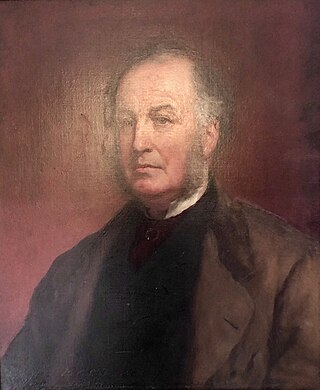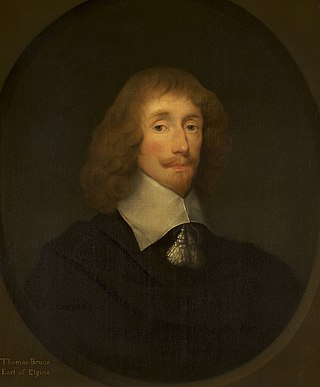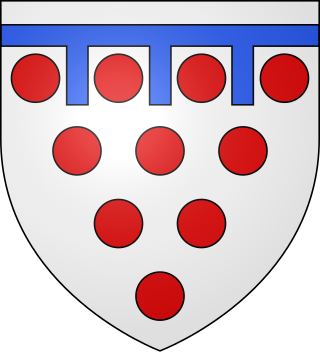
Marquess of Exeter is a title that has been created twice, once in the peerage of England and once in the peerage of the United Kingdom. The first creation came in the peerage of England in 1525 for Henry Courtenay, 2nd Earl of Devon. For more information on this creation, which was forfeited in 1538, see Earl of Devon.

Mildmay Fane, 2nd Earl of Westmorland, styled Lord le Despenser between 1624 and 1628, was an English nobleman, politician and writer.
The High Sheriff of Tipperary was the Sovereign's judicial representative in County Tipperary. Initially an office for a lifetime, assigned by the Sovereign, the High Sheriff became annually appointed from the Provisions of Oxford in 1258. Besides his judicial importance, he had ceremonial and administrative functions and executed High Court Writs.
The High Sheriff of County Galway was the Sovereign's judicial representative in County Galway. Initially an office for lifetime, assigned by the Sovereign, the High Sheriff became annually appointed from the Provisions of Oxford in 1258. Besides his judicial importance, he had ceremonial and administrative functions and executed High Court Writs.
Colonel Robert Walpole was an English Whig politician and militia officer who served as a member of parliament for the borough of Castle Rising from 1689 to 1700. He is best known for being the father of Robert Walpole, the first British Prime Minister. Walpole is the ancestor of all the Barons Walpole and Earls of Orford, of all creations, and of the present Marquess of Cholmondeley, owner of Houghton Hall. He is also the Guinness World Records holder for having the world's longest overdue public library book.
Sir Samuel Brise Ruggles-Brise was a British Conservative politician, and owner of Spains Hall, Essex.
Sir Kildare Borrowes, 3rd Baronet was an Irish politician.

Christopher Guy Vere Davidge, of Little Houghton House, OBE DL was a British rower who competed in the Summer Olympics three times in 1952, 1956 and 1960 and won the Silver Goblets at Henley Royal Regatta three times.
Cecil Vere Davidge of Little Houghton House DL was a British lawyer and academic, who served as a Fellow and bursar of Keble College, Oxford, and as High Sheriff of Northamptonshire.

John Smyth was a British politician who sat in the House of Commons from 1783 to 1807.
Colonel William Vere Reeve King-Fane was an English local politician, magistrate and landowner, who served as vice-chairman of Kesteven County Council and High Sheriff of Lincolnshire.

Sir Robert Loder, 1st Baronet, DL, JP was an English landowner, magistrate and Conservative politician. Loder is a Member of the Loder (Family)

Vere Essex Cromwell, 4th Earl of Ardglass PC (I), was an English nobleman, son of Thomas Cromwell, 1st Earl of Ardglass and Elizabeth Meverell. He was the last direct male descendant of Henry VIII's chief minister, and key architect of the English reformation, Thomas Cromwell.
Sir Glynne Earle Welby-Gregory, 3rd Baronet, born Glynne Earle Welby, was a British Tory Member of Parliament.
The High Sheriff of Limerick was the British Crown's judicial representative in County Limerick, Ireland from the 13th century until 1922, when the office was abolished in the new Free State and replaced by the office of Limerick County Sheriff. The sheriff had judicial, electoral, ceremonial and administrative functions and executed High Court Writs. In 1908, an Order in Council made the Lord-Lieutenant the Sovereign's prime representative in a county and reduced the High Sheriff's precedence. However, the sheriff retained his responsibilities for the preservation of law and order in the county. The usual procedure for appointing the sheriff from 1660 onwards was that three persons were nominated at the beginning of each year from the county and the Lord Lieutenant then appointed his choice as High Sheriff for the remainder of the year. Often the other nominees were appointed as under-sheriffs. Sometimes a sheriff did not fulfil his entire term through death or other event and another sheriff was then appointed for the remainder of the year. The dates given hereunder are the dates of appointment. All addresses are in County Limerick unless stated otherwise.

Thomas Bruce, 1st Earl of Elgin, 3rd Lord Bruce of Kinloss, of Houghton House in the parish of Maulden in Bedfordshire, was a Scottish nobleman.
Charles Edwin was a Welsh politician who sat in the House of Commons from 1741 to 1756.
Ingram Ord Capper was a British sports shooter. He competed in the 100 m running deer event at the 1952 Summer Olympics.

Babington is the name of an Anglo-Irish and English gentry family. The Anglo-Irish branch of the family is still extant today.
Cecil William Davidge was a professor of English, author and Freemason. Davidge was the father of the barrister and academic Cecil Vere Davidge and grandfather of Olympic rower Christopher Davidge.










